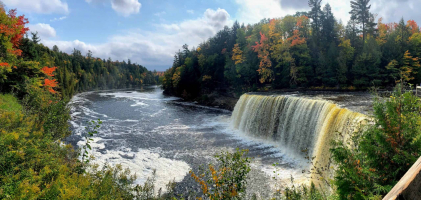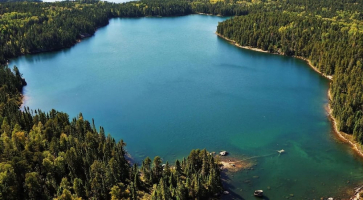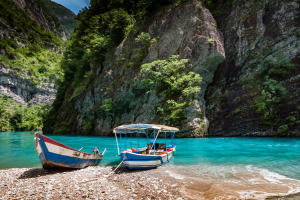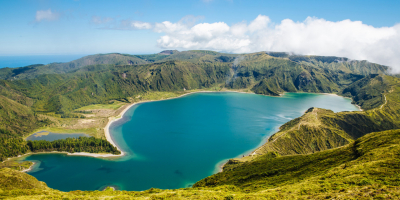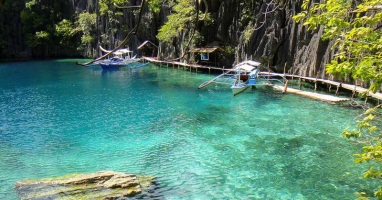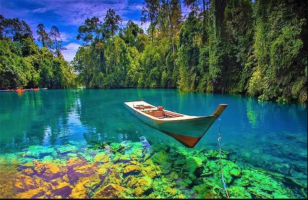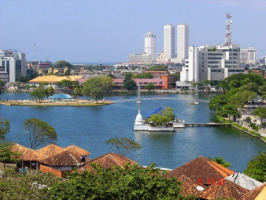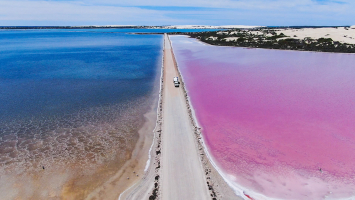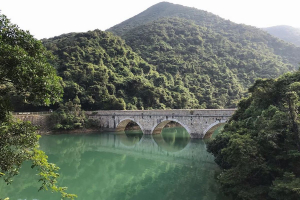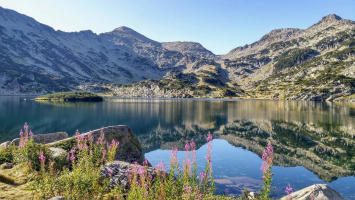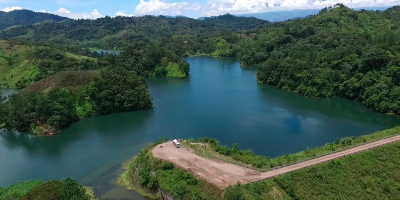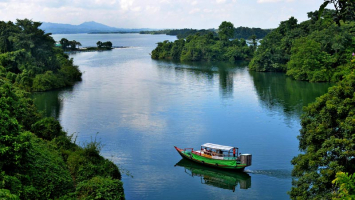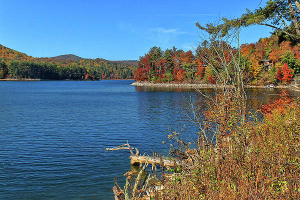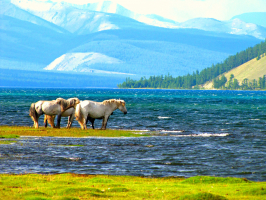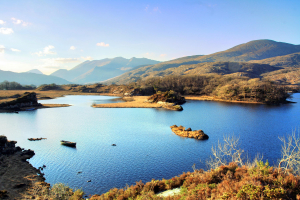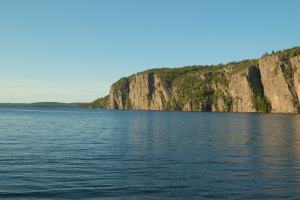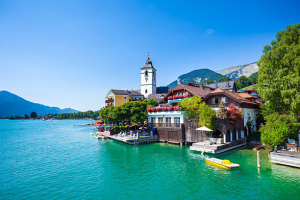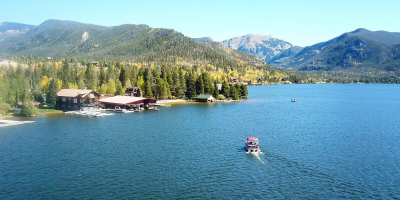Top 12 Most Beautiful Lakes in Michigan
The lakes are the ideal summer destination for those who want a place to relax and cool off without descending to cramped beach destinations. In the vast ... read more...region of Michigan, there is no shortage of beautiful lakes. Let's join Toplist to discover the most beautiful lakes in Michigan!
-
One of the most beautiful lakes in Michigan is Lake Michigan. After Lake Superior and Lake Huron, it is the second-largest Great Lake in terms of volume (4,900 km3) and third-largest in terms of surface area (58,030 km2). Its basin is connected with Lake Huron's to the east through the constricting Straits of Mackinac, giving it the same elevation on the surface as its eastern counterpart; theoretically, the two lakes are one.
By area, Lake Michigan is the largest lake in a single nation. It is situated in the United States and is bordered by the states of Wisconsin, Illinois, Indiana, and Michigan in that order. Milwaukee and the City of Green Bay in Wisconsin, Chicago in Illinois, Gary in Indiana, and Muskegon in Michigan are among the ports that line its coastline. Grand Traverse Bay lies in the northeast, and Green Bay, a sizable bay, is in the northwest. It is thought that the Ojibwe word michi-gami or mishigami, which means "great water," is where the word "Michigan" originates.
Numerous recreational activities offered by Lake Michigan support a robust tourism sector in the Great Lakes states. Visitors to Lake Michigan can engage in a variety of activities, such as swimming at one of its lovely beaches, sport fishing, recreational boating, and hiking and camping in one of the numerous state and national parks situated along the shoreline.
Location: its basin is conjoined with that of Lake Huron through the narrow Straits of Mackinac
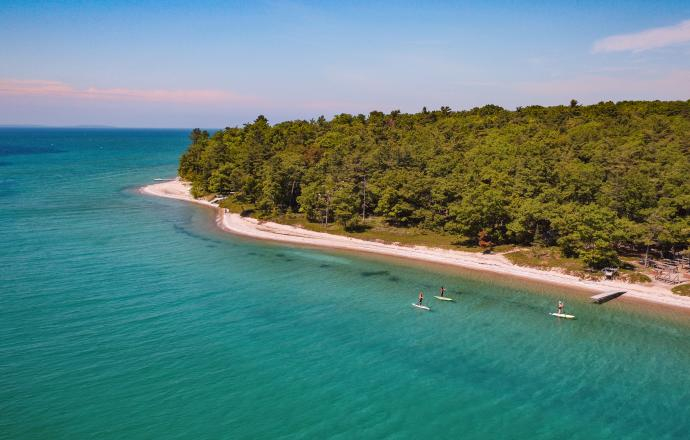
Photo: michigan.org Video: https://www.youtube.com/watch?v=FbRF3YbZaaI -
The largest of the Great Lakes of North America, Lake Superior is also the world's largest freshwater lake by surface area and the third largest by volume. 10% of the freshwater on the planet's surface is contained there. It is bordered by the Canadian province of Ontario to the north, the American states of Minnesota to the northwest, Wisconsin, and Michigan to the south, and the Canadian province of Ontario to the north.
The magnitude of Lake Superior lessens the intensity of its humid continental climate's seasons. Seasonally varying between 32 and 55 °F circa 1970, the water surface's delayed response to temperature fluctuations helps to regulate the surrounding air temperatures in the summer (cooler with regular sea breeze forms) and winter and causes lake-effect snow in colder months. Particularly in the fall, the lake's bordering hills and mountains act as reservoirs for precipitation and fog.
More than 200 rivers and rivulets flow into Lake Superior, which is home to more than 80 different fish species. The Lake Superior Half Circle Tour, which is the same thing but only conducted on the Canadian side, can be used to visit this area. There are lots of parks, trails, and canoeing options along the road throughout the provincial sections of tour.
Location: Michigan's Upper Peninsula
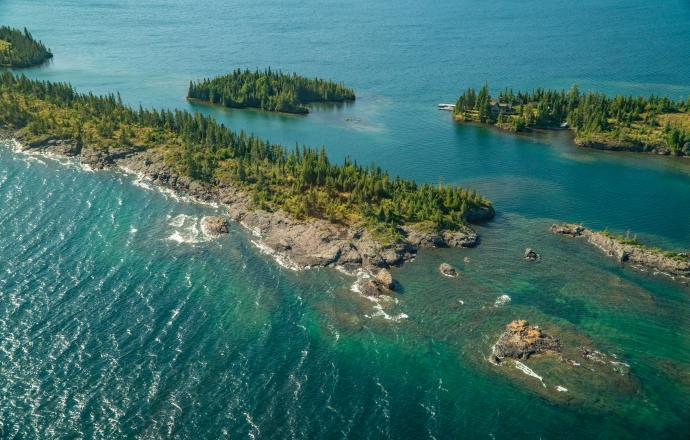
Photo: michigan.org 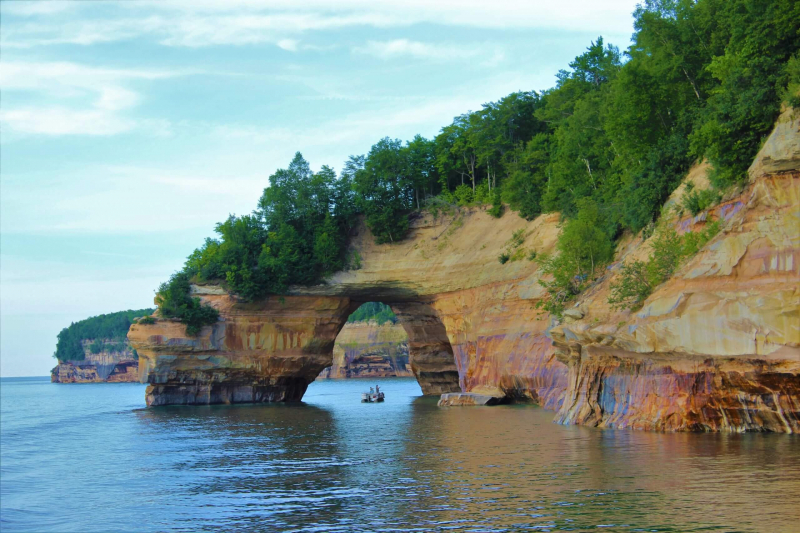
Photo: lakesuperiorcircletour.info -
One of other North America's five Great Lakes is Lake Huron. In terms of hydrology, it consists of the eastern end of Lake Michigan-Huron, which is joined to Lake Michigan by the 8 km, 37 m long Straits of Mackinac. The Canadian province of Ontario borders it on the north and east, and the American state of Michigan borders it on the south and west. The Huron people who lived in the area were named by early French explorers who gave the lake its name.
Evidence gathered in the Lake Huron region led to the naming of the Huronian glacial. The North Channel and Georgian Bay are located in the lake's northernmost regions. In the southwest part of the lake is Saginaw Bay. The St. Marys River serves as the primary inlet, and the St. Clair River serves as the primary exit.
Recently, a number of new invasive species have been introduced to Lake Huron, including zebra and quagga mussels, the spiny water flea, and round gobies. By 2006, the lake's demersal fish community had collapsed, and the zooplankton community had undergone a number of significant alterations. In recent years, Chinook salmon catches have also significantly decreased, and lake whitefish abundance and health have declined. The new foreign species may be to blame for these recent alterations.
Location: bordered by Michigan in the U.S. and Ontario in Canada
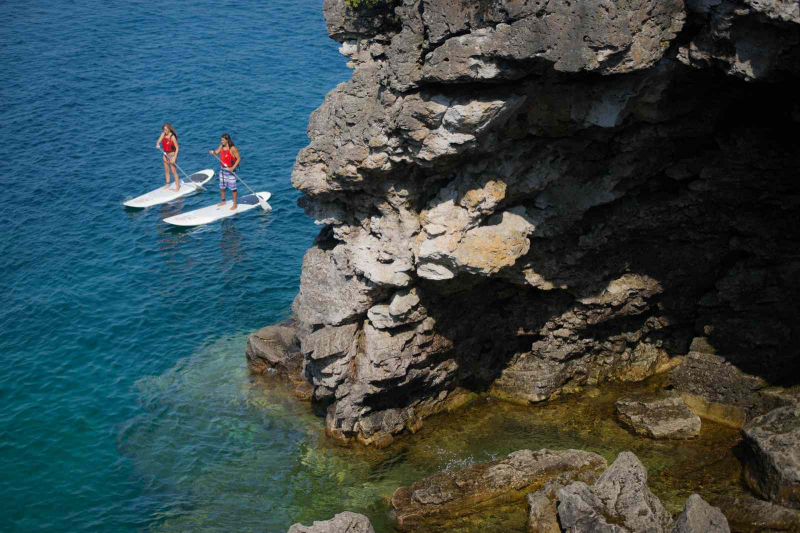
Photo: greatlakes.guide 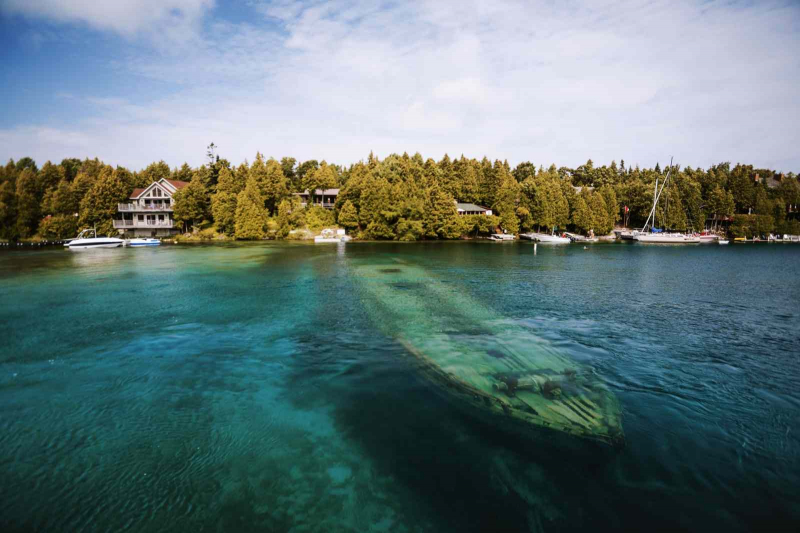
Photo: greatlakes.guide -
The next position on the list of the most beautiful lakes in Michigan is Lake Erie has the fourth-largest surface area and ranks as the eleventh-largest lake in the world. It has the shortest average water residency time since it is the most southern, shallowest, and most diminutive Great Lake in terms of volume. 210 feet (64 meters) is how deep Lake Erie is at its deepest point.
On the Canadian side of Lake Erie, specifically, the Ontario Peninsula is the Canadian province of Ontario. The American states of Michigan, Ohio, Pennsylvania, and New York are on the lake's western, southern, and eastern coasts. The lake's surface is divided between these authorities by water boundaries.
The volume-wise smallest and shallowest of the Great Lakes is Lake Erie. It warms up quickly in the spring and summer, and in the fall, it cools down quickly. There are several islands in Lake Erie that are enjoyable to visit for day outings. Excellent swimming beaches are available, and almost all water sports are available. On the shores of Lake Erie, the Lake Erie Metropark is a terrific place to locate walking and bike paths, a swimming pool, golf courses, and amenities like bathrooms.
Location: west of the state of Michigan
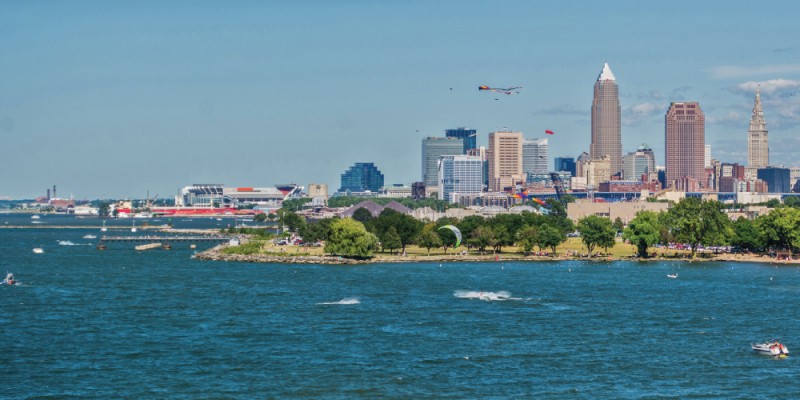
Photo: glc.org 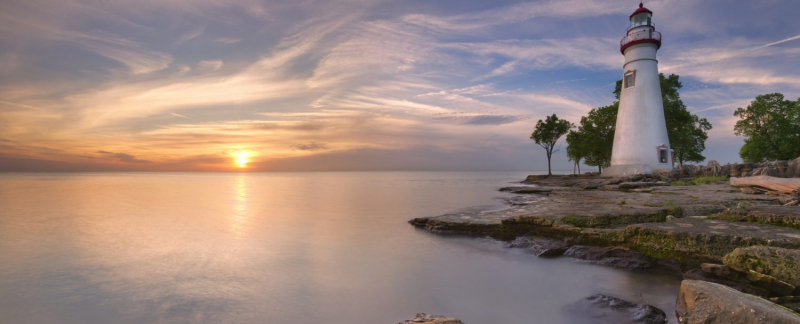
Photo: thelakehouseinn.com -
Bass Lake is a 344-acre glacial lake in Grand Traverse County, Michigan's northwest, close to Grawn and Traverse City. The lake has excellent sandy beaches and a maximum depth of 28 feet. Soaring trees provide welcoming shady spaces for people enjoying a weekend on the water. It is naturally divided into two unequal pieces, with a strait between them that is 61 meters wide. Bass Lake is the common name for the northern section, whereas Beitner Lake or Mulberry Lake are sporadically used to refer to the southern section. Long Lake to the west and Silver Lake to the east, both of which are larger than Bass Lake, encircle the lake.
The lake is excellent for water sports like waterskiing, canoeing, and kayaking, but it is also one of the more well-liked lakes for fishing among the residents. Rock bass, northern pike, and walleye are the main targets of anglers because they all do well in the chilly lake waters. Boaters traveling to Bass Lake can use a boat ramp owned by the Michigan Department of Natural Resources. The lake has the atmosphere of a wild, remote location despite being fairly close to crowded areas.
Location: Grand Traverse County, Michigan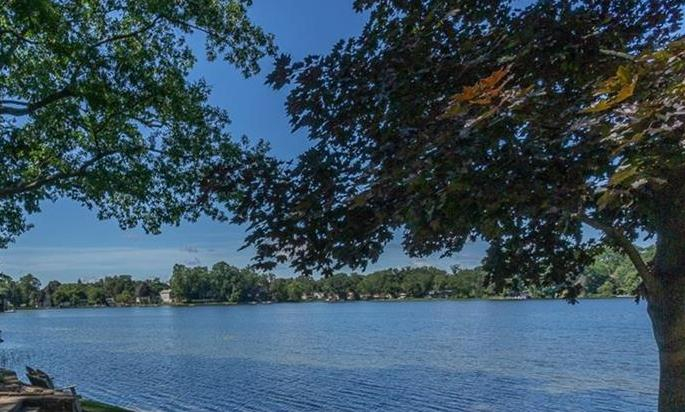
Photo: michiganlakerealestatehomes.com 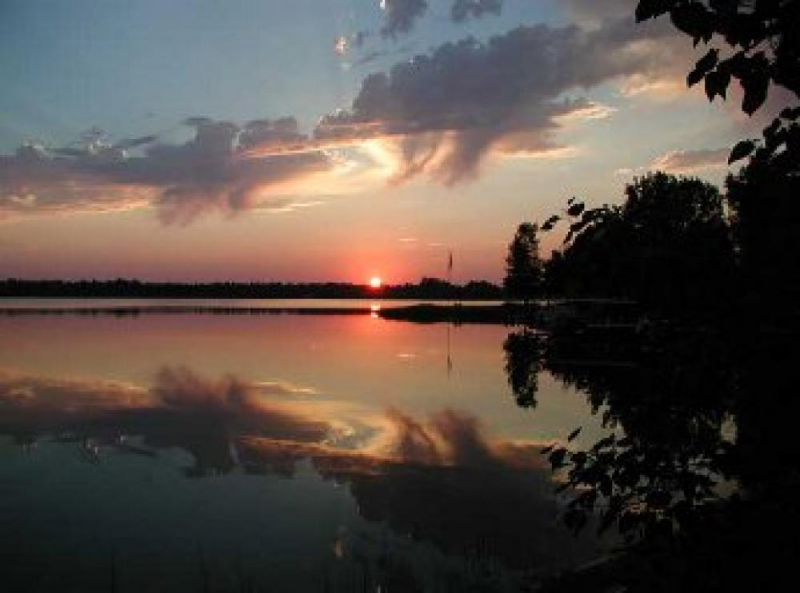
Photo: michigan.org -
In the American state of Michigan's Leelanau Peninsula is where Lake Leelanau is located. About 35 km2 of the lake, which consists of two bodies of water North Lake Leelanau and South Lake Leelanau, is located in Leelanau County. Carp Lake is another name for the body of water.
Lake Leelanau is divided into two portions, each having unique depths, temperatures, and fish species. Although South Leelanau is the larger region and North Leelanau is the smaller portion, both offer opportunities for water activities. If you're staying close to Lake Leelanau, you can take a day trip to Sleeping Bear Dunes National Lakeshore to explore the sand dunes and the park.
One of the most beautiful lakes in the state is Lake Leelanau in northern Michigan. Swimming and boating are two of the most popular activities at this lake, which is thought to be a terrific family-friendly lake close to Traverse City in the Lower Peninsula. If you want to book a holiday on the water with everything just outside your door, the lake is the perfect location as it is surrounded by numerous vacation homes and rentals.
Location: Leelanau County, Michigan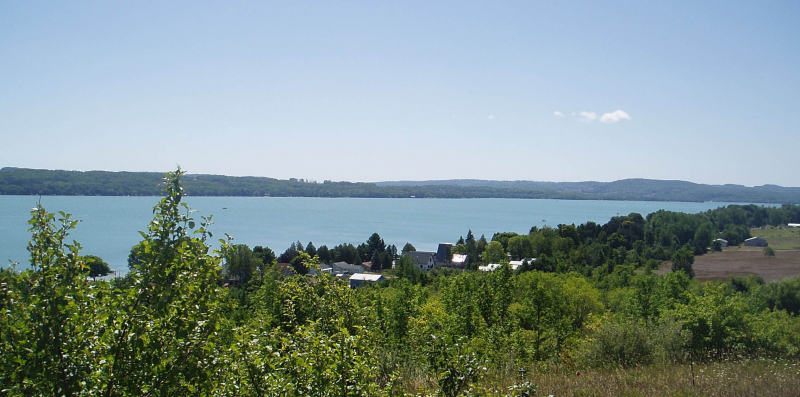
Photo: wikipedia 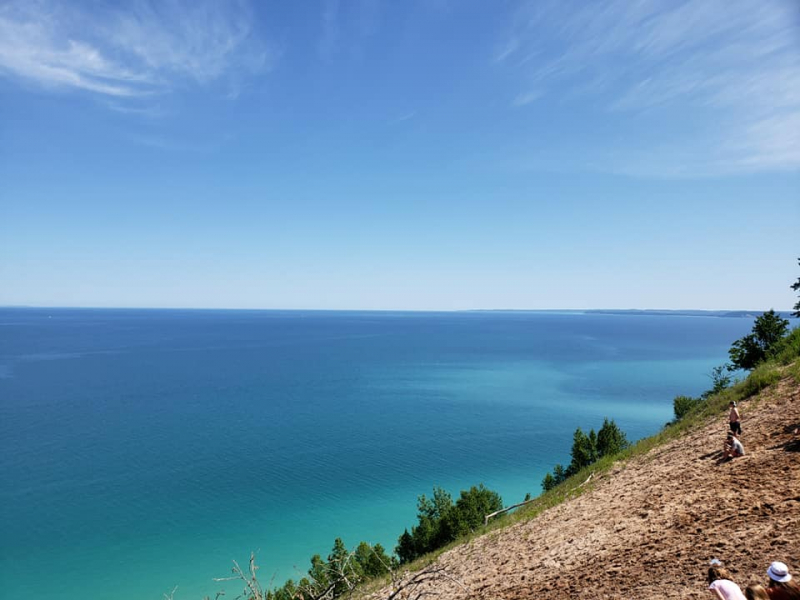
Photo: backroadramblers.com -
Northern Michigan contains a lake called Torch Lake. It is the second largest inland lake in Michigan, behind Houghton Lake, and is the state's longest inland lake at 31 km. It is Michigan's deepest inland lake and the state's largest by volume, with a maximum depth of 94 m and an average depth of 34 m.
Together with its neighbor Lake Michigan, Torch Lake was initially formed towards the conclusion of the Last Glacial Period. The Great Lakes were formed when melting glaciers filled the new basins cut out by retreating glaciers on the Earth's surface. Torch Lake was formerly a bay of the developing Lake Michigan, along with other long lakes in the area like Lake Leelanau and Elk Lake. However, these lakes were cut off from Lake Michigan by sandbars that developed at their northernmost points.
Outdoor pursuits like hiking, canoeing, fishing, and diving are popular around the lake. The lack of boat traffic makes it a haven for nature enthusiasts. Known for its extraordinary beauty, its waters are remarkably pure and have a vivid blue tint, frequently reminding people of the waters in the Caribbean. Due to this characteristic, the lake has become a well-liked location for the construction of resorts and second houses. Famous people with holiday homes on the lake include Kid Rock, Eminem, and Michael Moore.
Location: Antrim & Kalkaska counties, Michigan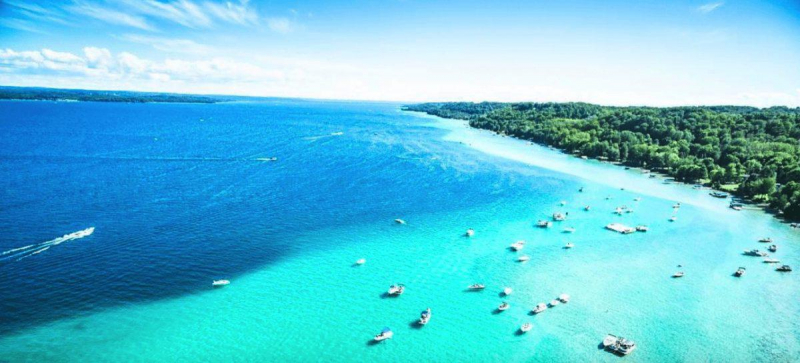
Photo: Forbes.com 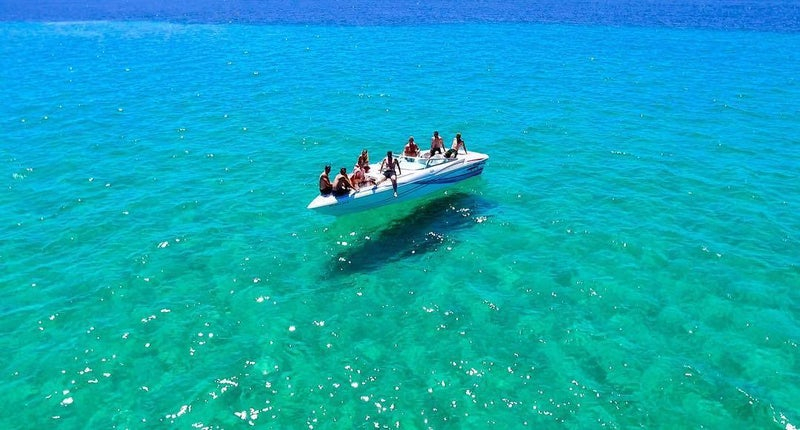
Photo: brookwalsh.com -
Freshwater Lake St. Clair is situated between the American state of Michigan and the Canadian province of Ontario. After Saint Clare of Assisi, whose feast day it was when they first saw the lake, it was given that name by French Catholic explorers in 1679. Historically, it served as a shipping route connecting Lake Huron and Lake Erie, but today it is a well-liked lake for outdoor activities like fishing. There are numerous swimming beaches along the lake.
With 430 square miles and towns that are geared toward life on the water, Lake St. Clair is one of the best lakes in the state for boating. The lake facilitates easy access to neighboring ports, and there are numerous waterfront eateries. There are many tributaries and little canals that are great for kayaking and taking in the scenery.One of the Great Lakes that is most frequently visited by people is Lake St. Clair, which offers residents who live nearby a variety of ecological, recreational, and economic advantages. The St. Clair-Detroit River System provides drinking water to millions of people on the American and Canadian sides of the lake, and the area's coastal wetlands are an important home for several fish, amphibians, reptiles, and migrating bird species.
Location: Macomb County, Michigan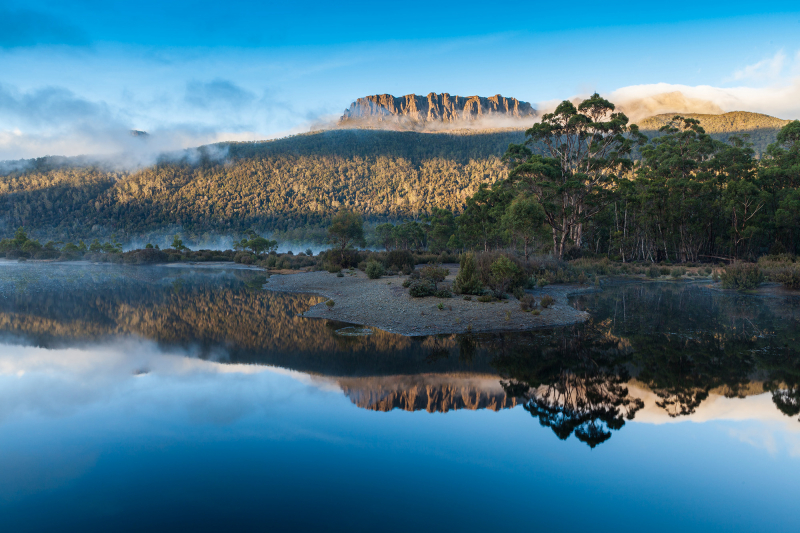
Photo: parks.tas.gov.au 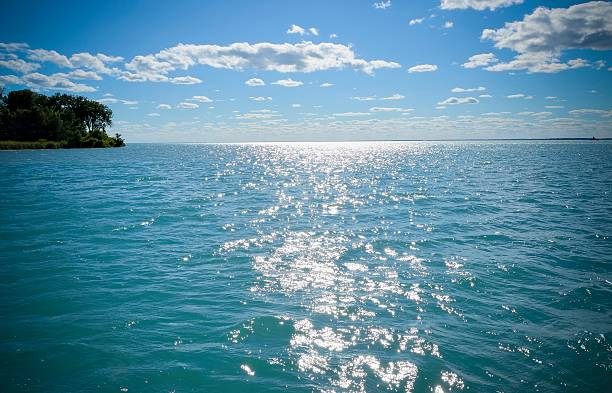
Photo: istockphoto.com -
Northern Michigan's Antrim and Grand Traverse counties are home to Elk Lake. The lake is located at 44°51′N 85°23′W, about a mile and a half broad (2.4 km), and nine miles (14 km) long, not far from the town of Elk Rapids. After Torch Lake, it is the second-deepest lake in Michigan with a maximum depth of 59 meters. Lake trout, rock bass, yellow perch, smallmouth bass, muskellunge, ciscoes, brown trout, rainbow trout, and whitefish can all be found in this well-liked lake for fishing.
Elk Lake is a good choice if you want a more private and serene lake experience. The beaches and waterways are less crowded than those of other well-known lakes, despite being the second-deepest inland lake in the state. It lies near the northern Michigan community of Elk Rapids.
Visitors are drawn to Elk Lake because of its serene surroundings as well as its stunning blue water. Elk Lake is a section of the 75-mile waterway known as the Chain of Lakes in Michigan, which is made up of 14 interconnected lakes. Elk Lake is excellent for ice-boating and sailing in the winter. This lake is great for fishing, especially in the deepest area in the middle where fishermen can target lake trout because it is 200 feet deep. Elk Lake is one of the most beautiful lakes in Michigan.Location: Antrim / Grand Traverse counties, Michigan
Video: https://www.youtube.com/watch?v=JrLgiivotIM 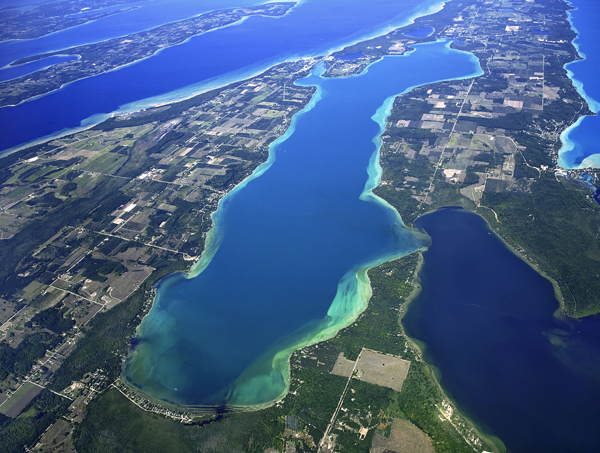
Photo: cbgreatlakes.com -
In the American state of Michigan Cheboygan County is Burt Lake which is a lake with a surface area of 69 km2. The lake's western shore forms the border between it and Emmet County. The lake bears William Austin Burt's name. From 1840 to 1843, he and John Mullett conducted a federal survey of the region. Because it has almost everything and is in an accessible position, Burt Lake is one of the Lower Peninsula's most useful lakes to visit. If you want to base yourself in the city of Cheboygan, you can stay near to the lake.
One of the several park sites close to Burt Lake includes a 2,000 foot coastline at Burt Lake State Park. At Maple Bay Campground, camping is possible and there is a beach.
Burt Lake is well known for its boating and swimming, but it's also one of the best fishing lakes in the state. Anglers visit the lake in search of trophy-sized walleye as well as for the abundance of bass, trout, and sturgeon. You may enter the Inland Waterway system from Burt Lake if you wish to kayak along waterways.
Location: Cheboygan County, Michigan
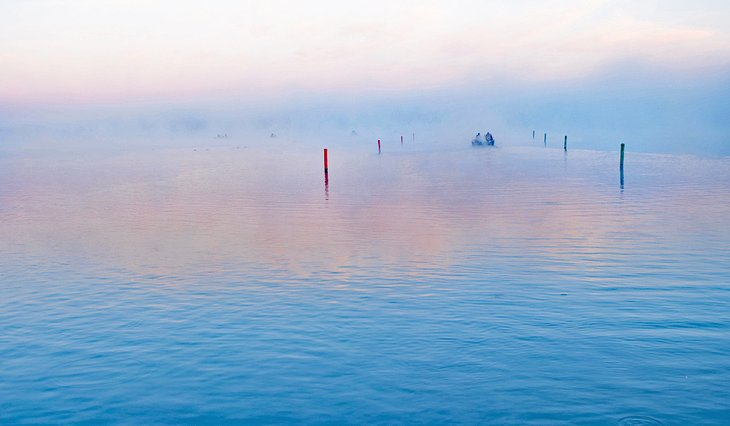
Photo: planetware.com Video: https://www.youtube.com/watch?v=X1_Oqp_PB50 -
The next position on the list of the most beautiful lakes in Michigan is Higgins Lake which is a sizable lake used for both pleasure and fishing in Roscommon County, Michigan, in the United States. The 10th largest lake in Michigan has a shoreline of 21 miles and is famed for its deep, clear waters. It is 40 km2 in size (34 km). It bears Sylvester Higgins' name, who served as the Michigan Geological Survey's first chief of the topographical division.
Higgins Lake's glacial waters are so incredibly blue that it is difficult to tell that it is a lake and not the ocean. In north-central Michigan, it is close to the unincorporated community of Roscommon. The natural lake is nice for swimming and has lovely beaches. Since the water is so transparent, snorkelers are frequently spotted. Each end of Higgins Lake features a state park with campgrounds, beaches, and boat access.
Kneeboarding and water skiing are both excellent on this lake. One of the best lakes in the state for ice fishing for northern pike, bass, and trout is Higgins Lake. The area surrounding Higgins Lake is quite beautiful, so while you're here, take some time to explore the local hiking trails.
Location: Roscommon County, Michigan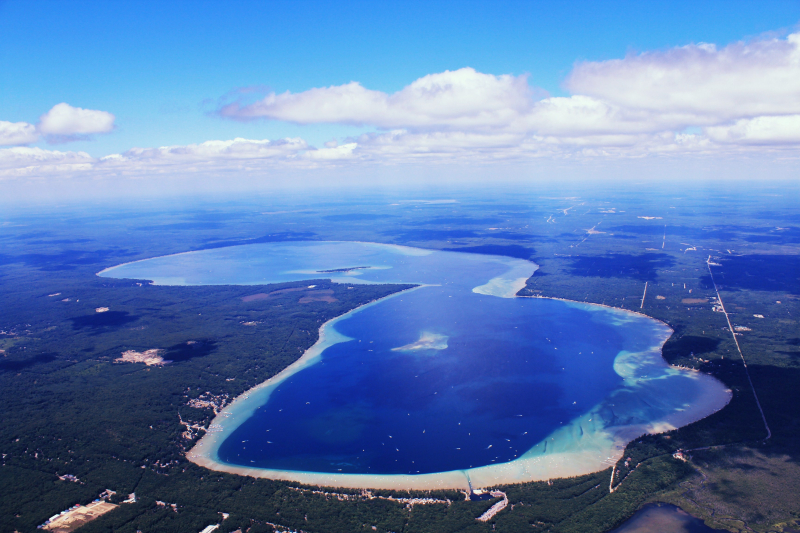
Photo: bridgemi.com 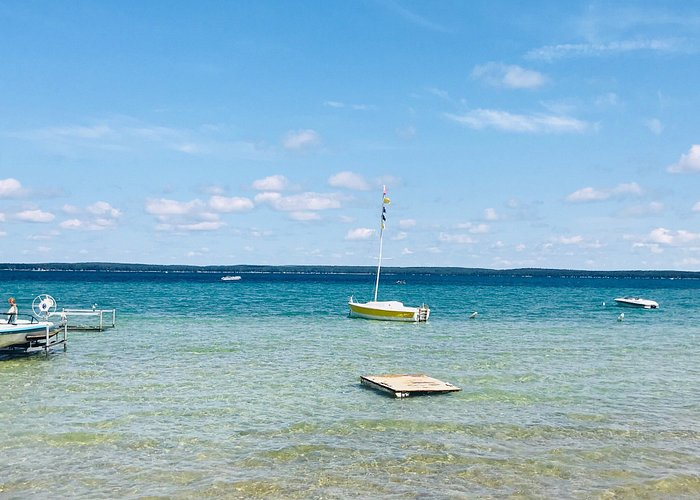
Photo: tripadvisor.co.nz -
Located in Onekama Township in Manistee County, Michigan, the United States, Portage Lake is a natural lake. At the northern extremity of the lake is the Michigan hamlet of Onekama.
When Joseph Stronach designated the natural stream at Portage Point that flowed into Lake Michigan as Portage Creek in 1837, the lake was first referred to as Portage Lake. The lake was known as "O-nek-a-ma-engk or Portage Lake" in the survey conducted by the U.S. Government in that same year. This survey data was initially made available during the 26th Congress. The State of Michigan and the Surrounding Country, a map by Detroit's John Farmer, was the first to depict and identify the lake.
A very well-liked recreational lake is Portage Lake. Due to its proximity to Lake Michigan, it sees a lot of sailboat activity as well as recreational and fishing boat traffic. From Onekama, a number of charter boats go for Lake Michigan fish. Northwest Michigan's Portage Lake serves a variety of recreational needs. Due to the abundance of shipwrecks that are located below the surface, it is a well-liked location for diving. There are numerous boat launches on the lake, which is a well-liked destination for recreational boaters and is close to Onekama, Michigan. It is a premier fishing location all year round.
Location: Manistee County, Michigan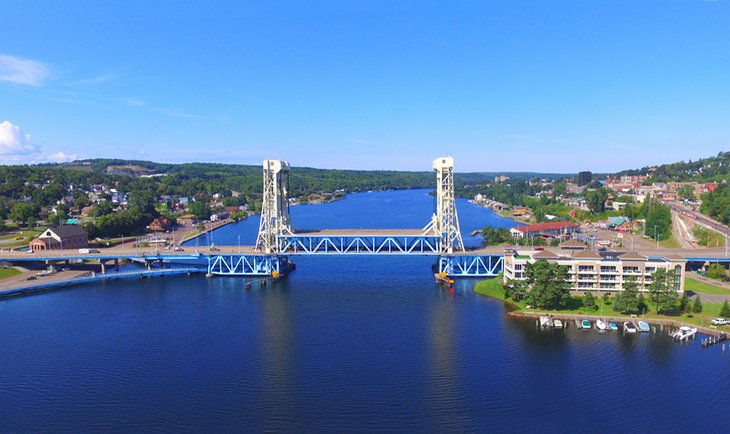
Photo: planetware.com 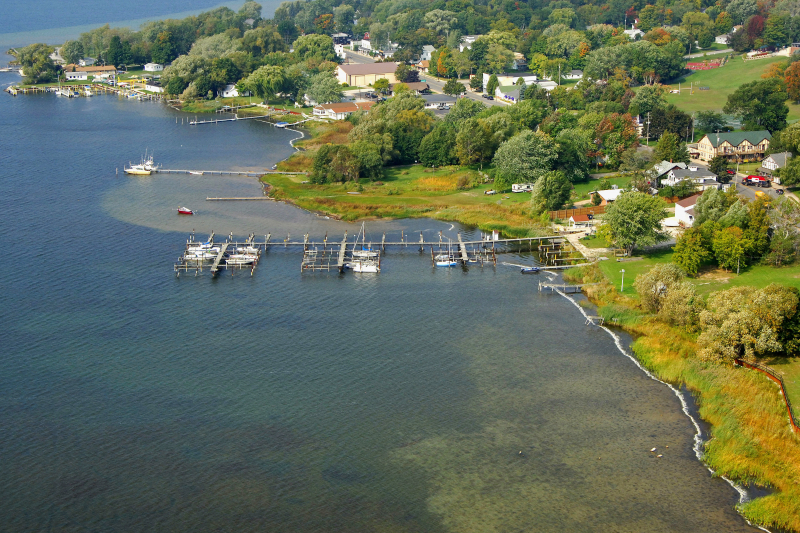
Photo: marinas.com














